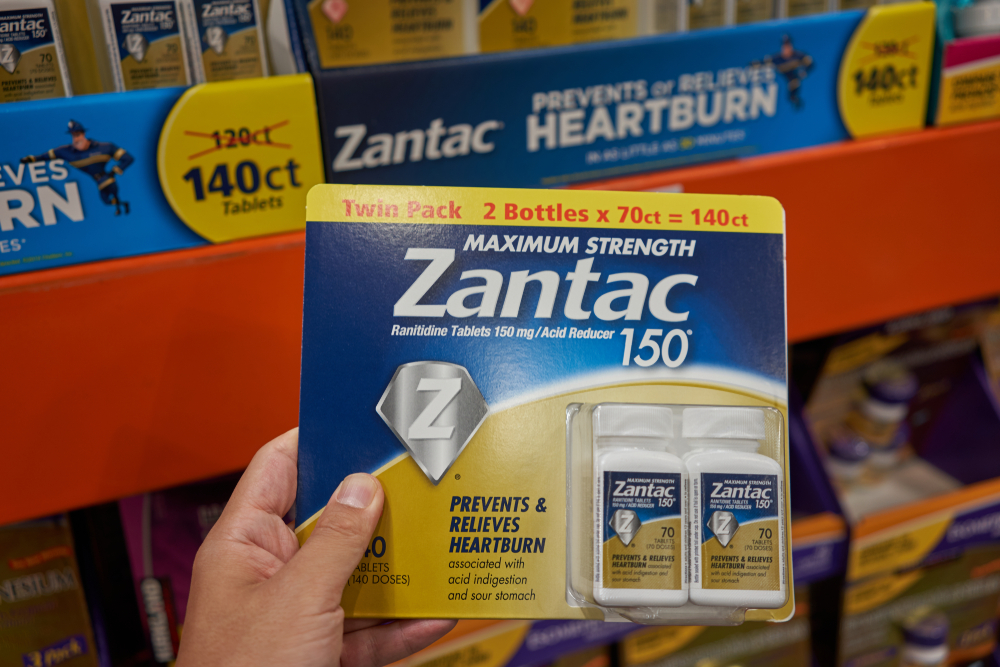In 1996, the FDA approved a new drug developed by Janssen Pharmaceuticals called Elmiron. Also known as Pentosan Polysulfate, the drug had been approved as a relief for the bladder pain and discomfort caused by interstitial cystitis, a disease that causes swelling and scarring of the bladder wall.
In 1991, before the approval of Elmiron, studies had already known that drugs like it could inhibit the regrowth of retina cells. In 1992, it was even examined as a possible cancer treatment, based on its prevention of cell growth.
The FDA’s approval came after multiple rejections based on the inability of Janssen to provide compelling evidence that their medication worked. However, after a company-funded trial in 1995 in which self-reported pain was shown to decrease while taking the medication, it was approved.
From approval until today, over 150 reports have been made to the FDA citing vision problems after being prescribed the drug.
It was not until 2018 that independent researchers discovered firm links between Elmiron and Maculopathy (or vision problems). Since then, several other studies have confirmed the findings while recent studies also dispute the claim that Elmiron offers any effective relief from cystitis. Despite this, Elmiron is still recommended as a treatment for interstitial cystitis and, until June 2020, labeling did not mention a risk of vision problems.
A 2017 study showed that sufferers of interstitial cystitis were facing economic hardship in their willingness to use Elmiron, with 67% of patients struggling to pay for the drug. The previous year, the drug had made sales of over $250 Million.
Patients who were prescribed Elmiron and now suffer permanent damage to their vision have begun legal proceedings against Janssen Pharmaceuticals and its parent company, Johnson and Johnson. They claim that the companies were negligent in not providing information to doctors as to the risks involved and actively promoting the medication as safe.
Why Are Elmiron Lawsuits Warranted?
With the approval of the FDA and no access to further information from the manufacturers, physicians have been prescribing Elmiron to patients without being informed of the high risk of damage to vision. This lack of informed consent is compounded by the fact that the company knew of the risks for years before acting upon the information.
Under a number of civil laws, Janssen Pharmaceuticals and its parent company, Johnson and Johnson, may be held liable for many important reasons:
- Research into possible effects of Elmiron on the retina was not done when seeking FDA approval, despite knowledge of how similar drugs affect retinal cell growth.
- Janssen ignored reports from patients both directly and through the FDA.
- Janssen was negligent in their lack of sufficient testing of their medication.
- Despite five separate updates to the warning labels on Elmiron, it was not until June 2020 that a warning was added regarding retinal damage of maculopathy.
- Janssen was fully aware of the risks before 2020, having changed the label on their Canadian sales of Elmiron in the middle of 2019. Despite this, they did not change the labeling on US packaging until ordered to by the FDA.
- Elmiron continues to be marketed as a safe and effective relief for interstitial cystitis, despite evidence against this.
As retinal maculopathy is a permanent and highly debilitating condition that was unavoidable on the part of the patient, it is expected that compensation should take into account the ongoing suffering as well as medical costs faced through the rest of life.
Patients should also be compensated for the economic damage associated with loss of employment due to failing vision.
How Do I Know if I Qualify to Be a Part of an Elmiron Lawsuit?
If you or a loved one took Elmiron on a daily basis for longer than six months and experienced any of the following, you should seek legal advice:
- Maculopathy / macular retinopathy
- Age-related macular degeneration
- Retinal dystrophy
- Other retinal conditions
If you or a loved one have taken Elmiron, you should talk to your doctor about having your eyes examined. Maculopathy is too often diagnosed long after it has begun and, the earlier it is discovered, the better the long-term outcomes are. Before making any decisions regarding your health, speak to your healthcare provider.
As there are many lawsuits currently running against Janssen Pharmaceuticals, lawyers are currently discussing the formation of a Multidistrict Litigation (MDL). MDLs are a way to have a single case in which plaintiffs may pool resources to seek damages against large companies.
A History of Elmiron Lawsuits
The following is a short list of the key cases currently running against Janssen pharmaceuticals, its subsidiaries, as well as Teva, Bayer, Alza, Centocor, Ortho-McNeil, and IVAX. These are but some of the more than eighty cases currently running, and are considered important stepping stones to legal compensation for all victims.
As of November 2020, plaintiffs in a number of these cases have called for a Multidistrict Litigation (MDL), which would combine them into one larger case. Janssen has not attempted to stop this motion, and we expect to see an MDL form in 2021. To be a part of this landmark series of trials, use the contact form provided for a free consultation with a lawyer who can help you.
Pelczar vs. Teva Branded Pharmaceutical Products (March 2020)
Kimberley Pelczar began taking Elmiron in 2005 and ten years later began seeing medical providers for visual symptoms that eventually led to a diagnosis of permanent retinal injury. On March 26, 2020, Pelczar filed suit complaining that drug makers failed to properly warn of the dangers of Elmiron and actively hid information from the public.
In April, based on further information, she changed the defendants from Teva to Janssen pharmaceuticals. On June 17, 2020, Pelczar gave a voluntary notice of dismissal. This means that the case is currently closed but may be reopened at a later date. It is expected that this will become a part of an upcoming MDL.
Pisco vs. Janssen Pharmaceuticals et al. (2020)
In 2012, Tina Pisco was prescribed Elmiron for a painful bladder. Six years later, the plaintiff began experiencing visual symptoms that were later diagnosed as permanent retinal injury.
In May of 2020, Pisco began proceedings against both Janssen and Johnson and Johnson, claiming that the “withheld material adverse events from the public, the medical community and FDA [and] failed to disclose the serious link between Elmiron use and significant visual damage, including pigmentary maculopathy. Ultimately, tens of thousands of patients, including the plaintiff, were placed at risk and harmed as a result of this misleading conduct.”
No statement has yet to be made by either defendant.
Hull vs. Janssen Pharmaceuticals Inc et al. (2020)
Valerie Hull has been recognized as “Patient Zero” in a 2018 study by the Emory Eye Center in Georgia. In June 2020, she filed against Janssen and others, with the aid of a team of lawyers who had previously represented the children affected by the Flint Water Crisis.
These lawyers stated that, “Our clients have been using this drug for years yet to this day Johnson & Johnson refuses to warn of the risk of macular degeneration and blindness we [sic] hope these lawsuits will change that.”
The Hull case is especially important due to the role the plaintiff played in the important research that shed light on the dangers of Elmiron.
Allen vs. Janssen Pharmaceuticals, et al. (2020)
In May 2020, Mary Lee Allen filed suit against Janssen and others as a class action. This means that the suit was filed on behalf of all patients who had been prescribed Elmiron. Rather than seeking damages for current circumstances, Allen’s complaint is “to seek and receive appropriate diagnostic services and other declaratory relief they require.”
Mary Allen, while having taken Elmiron for many years during the time in which the public was unaware of the dangers, has yet to suffer from vision problems. Her claim, therefore, is unique in that it seeks preventative action on behalf of the defendants, and for these actions to be available to all patients who had been prescribed the medication.
This form of lawsuit is known as a medical monitoring lawsuit. These lawsuits face a range of issues, but famous cases exist that allow for this. The most famous of these is Ayers vs. Jackson, in which the citizens of the town of Jackson, New Jersey, were able to seek Medical Monitoring and relief due to well water contamination of toxic materials.
These citizens did not yet have to show symptoms to seek preventative medical help, and the judge also ruled a further two million dollars in damages for the emotional trauma caused by learning that they had been putting their lives at risk.
There are many other cases before the courts, claiming damages against Janssen and Johnson and Johnson, having been initially accepted as having the weight required for hearings. Just some of these cases include:
Lawyers across the country are currently working together to put a number of these cases into a single MDL, allowing the pooling of resources.
What Is Elmiron?
The generic name for Elmiron is Pentosan Polysulfate. The medication is currently used to treat interstitial cystitis, a painful syndrome of the bladder; we still have little understanding as to how this syndrome works.
There is some cause to believe that Elmiron doesn’t work at all. In its approval of the drug, the FDA found that only 25% of patients responded at all to the drug and that the placebo effect could not be ruled out. In a later 2014 study, there was no evidence that Elmiron offered any more relief than a placebo, regardless of dose.
Despite its ineffectiveness in providing relief for interstitial cystitis, Elmiron is highly prescribed as the only drug approved for the treatment of the condition. This has caused serious concerns for many medical professionals.
Pentosan Polysulfate has been known to inhibit cell growth in the eyes since 1991. In 2018, doctors at the Emory University Eye Center found several patients who had developed chronic maculopathy (vision loss due to damage to the retina) after long term use of Elmiron.
Robin A. Vora, M.D, Amar P. Patel, M.D., and Ronald Melles M.D., ophthalmologists at Kaiser Permanente then performed a large-scale study based on their own database and found 91 patients who had been taking Elmiron and could be tested against previous results. Close to one-quarter of those patients were found to have permanent abnormalities. Further studies of these abnormalities confirmed they were caused by drug toxicity.
Despite confirmation of the dangers of Elmiron as early as 2018, it was not until June of 2020 that Janssen Pharmaceuticals changed the labeling of Elmiron to include vision issues.
How Does an Elmiron Class Action Lawsuit Work?
Lawsuits against pharmaceutical companies can be mentally and psychologically draining. To know the basics of what you may be facing, we have provided a short list of common questions asked when facing the idea of holding these Janssen and associated companies responsible.
Do I Need a Lawyer to Join a Class Action Lawsuit?
You do not strictly require a lawyer to bring a lawsuit against a pharmaceutical company. However, to navigate the complex court system, one made more difficult by companies who pay millions of dollars to large legal firms, one would have little chance of finding justice without the help of someone knowledgeable and experienced.
Fortunately, to discuss your situation with a lawyer is completely free, and many lawyers will work for you without taking payment before settlement. This concept of “contingency fees” allows all of us to access the very best in legal help. By filling out our form, lawyers experienced in pharmaceutical lawsuits can get back to you, offering free advice about your situation.
How Long Does It Take to Settle an Elmiron Lawsuit?
As the variety of individual suits have yet to form a multidistrict litigation, and all individual suits remain outstanding, it is difficult to estimate how long any suit may take to settle. Based on other pharmaceutical suits, however, we can offer a range between three and fifteen years.
Because of the ability of parties to appeal decisions, and the amount of evidence any one case can produce, there is no way we could offer any shorter range. Lawsuits can be long, arduous processes, and must be for justice to be done.
What Is the Statute of Limitations on an Elmiron Lawsuit?
The statute of limitations is the timeframe in which you are legally able to seek compensation for damage caused to you by a person or company. In different jurisdictions, this can be anywhere between one and ten years after the event in which the damage was caused (or the time in which the cause of the damage was known).
In the case of Elmiron, the labeling change only occurred in June of 2020. In this case, all suits that begin within 2022, regardless of jurisdiction, are within the statute of limitations.
How Much Can You Get From an Elmiron Lawsuit?
While it is impossible to give a firm number on what you may be awarded by settling a lawsuit against the manufacturers and owners of Elmiron, we do know the results of previous cases in which severely damaging consequences occurred as a result of pharmaceutical negligence.
While successful plaintiffs rarely get less than what would cover their entire medical costs (both up to the case and in the future), many have been awarded “punitive” damages for psychological suffering and hardship in the area of millions of dollars. Janssen recently lost a case involving a different medication, Risperdal, for $7 Million.
How Long Does It Take to Get Your Money After You Settle a Lawsuit?
When a case has been settled, and all appeals finalized, the process of receiving money begins. This process can take between six weeks and three months, depending on the number of plaintiffs and their medical situations. To begin, outstanding bills with doctors, hospitals, and other medical professionals are paid, and sometimes trusts are made to pay future costs.
The remaining money is then sent to the legal team of the case, who take their small contingency fee. This is the first time the lawyers will be paid after years of working on your case. As soon as this fee is paid, you will receive a cheque or electronic transfer of your final settlement.
Wrapping Up
It is unacceptable that a company can get away with promoting a medication that may not work as marketed even while knowing the dramatic risks of permanent side effects. If you or a loved one have suffered as a consequence of being prescribed Elmiron, you may be eligible for compensation.
To learn more, simply fill the provided form below. A lawyer with years of experience will contact you for a free, no-obligation discussion of your circumstances.





